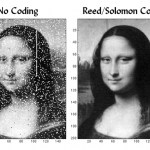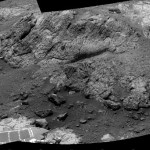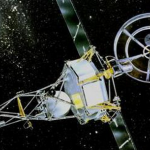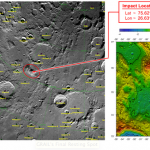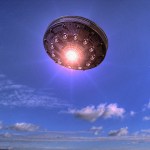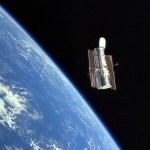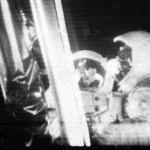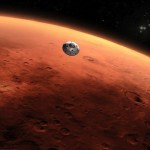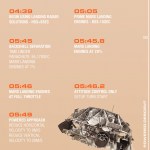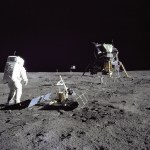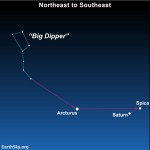NASA
The cultural critic Walter Benjamin, in his seminal 1936 essay The Work of Art in the Age of Mechanical Reproduction, argued that the "aura" of a work of art, that sense of special awe and reverence we feel, being in its presence, isn't inherent to art itself. Rather, it's a side-effect of its exclusivity, restricted exhibition, authenticity, or perceived value. With the age of "mechanical reproduction" (i.e. printed copies, films, and photographs), that aura disappeared, freeing art from its ties to the bourgeoisie and allowing mass audiences to, in a sense, "own" the work too. Take the Mona…
The wonderful Curiosity rover on Mars has been much in the news lately, but let's not forget about the previous rover generation! Opportunity landed on Mars nine Earth calendar years ago today on 25 January, and it still works fine. Its mate Spirit was mobile on the Red Planet for over five years and then functioned as a stationary science platform for another year before getting killed off by a Martian winter it couldn’t avoid. Amazing engineering that keeps working year after year without a technician so much as touching it.
Oppy is still on the rim of Endeavour crater, the area where it's…
Fifty years ago to day a space ship passed by the planet Venus. The Earthlings had named the space craft "Mariner 2" and sent it to Venus for purely scientific purposes. Interplanetary domination was never the intention of this or any other Earth mission.
And that began the story of planetary exploration as we know it.
I believe Mariner 2 was the 13th exploratory un-personed space mission by NASA.
Ebb and Flow, the Twin Gravity Recovery and Interior Laboratory (GRAIL) Space Ships, which have been employed to provide detailed gravitational mapping of the Moon's geology, have apparently served their purpose and will be reprogrammed in a few hours from now to crash into the moon on Monday.
PASADENA, Calif. -- Twin lunar-orbiting NASA spacecraft that have allowed scientists to learn more about the internal structure and composition of the moon are being prepared for their controlled descent and impact on a mountain near the moon's north pole at about 2:28 p.m. PST (5:28 p.m. EST) Monday,…
I'm kidding, I'm kidding, NASA did not say that. But I do think people need to take it down a notch with this whole blaming NASA for doing their press conferences wrong. As far as I know, the Curiosity Martian Laboratory Robot recently approached a non nondescript pile of dirt, analyzed the bejesus out of it as a test of the fancy dancy instruments on board, and everything worked. The pile of dirt was not interesting but they did to that pile of dirt what would have required 3,000 feet of laboratory floor space full of expensive equipment and a dozen technicians working for two months back…
Here is a pretty awesome video from NASA showing a 3D earth view of global ocean currents as they were from June 2005 to December 2007. It is fascinating to watch the behavior of both large and small features and how they interact. Notable for neighbors of the Atlantic ocean is the Gulf Stream bringing warm water from the Gulf of Mexico area north and east to keep the Queen warm in winter, and notable for the Antarctic ice sheets is the relative isolation, in terms of mixing, of the Southern Ocean and the Antarctic climate in general.
It is constructed with a combination…
I remember old sci-fi stories, where the colony ship would take generations to turn up in a new system, they'd take a brief look from orbit, land, and get overwhelmed by monsters / bacteria / natives / whatever exciting thing the author had thought up. And the obvious question was always: well, why didn't they spend a bit longer checking everything was all right? And the answer of course was that would make the story too boring.
But the contrast with Curiosity is fun. BA reports that because they've seen one odd little thing, everything is on hold until they've figured it out.
But at the same time say that Obama is doing it wrong:
The campaign’s plan cited four priorities – giving NASA focus, working with the international community, increasing the nation’s capacity to defend its assets in space and easing trade limits on foreign sales of American “space goods.” Romney did not suggest increased space spending — his budget plan would force cuts in domestic programs, including space — but on increased reliance on commercial firms to get Americans and their goods into space. That mirrors the Obama administration’s plan.
The OMB has reported on the effects of sequestration that will be triggered Jan 2013 unless Congress proactively changes the law before then.
Some time ago, Congress set itself a trap: in an attempt to look like they were dealing with government spending and the deficit, they passed a law that triggers automatic cuts to spending, unless Congress agrees and passes laws that make concomitant targeted cuts or revenue increases to decrease the deficit.
The nominal cuts are about $1.2 trillion, over a decade, cut from the projected budget in the out years, and are, by design flat across-the-board…
Neil Armstrong, first man to walk (and take a photograph) on the Moon, died August 25th at the age of eighty-two. Armstrong and Buzz Aldrin turned a primordial fantasy into reality, and what we knew was possible changed in the space of a television broadcast. On Universe, Claire L. Evans honors the human spirit as explorer of the solar system, writing "Going to the moon has a tendency to turn test pilots into poets.” Now, with machines like Curiosity in the vanguard, we will have to wait a while for true Martian poetry. On Starts With a Bang, Ethan Siegel says that Armstrong's last act on…
"I have announced this star as a comet, but since it is not accompanied by any nebulosity and, further, since its movement is so slow and rather uniform, it has occurred to me several times that it might be something better than a comet. But I have been careful not to advance this supposition to the public." -Giuseppe Piazzi, discoverer of Ceres, the first Asteroid
Out beyond Mars, but not quite out as far as Jupiter, a collection of thousands of rocky objects, ranging in size from pebbles all the way up to the size of Texas, lies the asteroid belt.
Image credit: David Minton and Renu…
“At the last dim horizon, we search among ghostly errors of observations for landmarks that are scarcely more substantial. The search will continue. The urge is older than history. It is not satisfied and it will not be oppressed.” -Edwin Hubble
While new discoveries are made about the Universe, a new explorer finds its way on a foreign world, and the world bids farewell to a legend, my old favorite -- the Hubble Space Telescope -- keeps amazing us all.
Image credit: NASA / STS-125, Space Shuttle Atlantis, Ruffnax (Crew of STS-125).
Now more than 22 years into its continuing mission, this…
Yesterday we lost Neil Armstrong, an accidental hero, thrust by fate onto a rock in the sky. Many dreamt of walking on the moon before he did, and a few men did after him. He happened to be the first. Hopefully many more men, and women too, will echo his iconic footsteps in the future. Perhaps even future space tourists will huddle around Tranquility base, laying nostalgic 60s filters over their high-resolution snapshots of an upended American flag from a long-ago mission.
We can only hope. A lot of my favorite humans have died this year: Armstrong, Sally Ride, Ray Bradbury, all people who…
NASA did an amazing thing a few days ago, landing a big giant amazing Science Robot on the Angry Red Planet, Mars. But to get to that point, to have The Ultimate Omelette, as it were, you've got to break a few eggs.
Here is what an egg looks like when NASA breaks it:
It doesn't just sit there and burn...it keeps blowing up and stuff, so you may want to watch the whole video if you missed the Fourth of July.
This is/was the Morpheus Lander.
Morpheus is a vertical test bed vehicle demonstrating new green propellant propulsion systems and autonomous landing and hazard detection technology.…
“We are much closer today to being able to send humans to Mars than we were to being able to send men to the moon in 1961, and we were there eight years later. Given the will, we could have humans on Mars within a decade.” -Robert Zubrin
This is what we can accomplish when we invest in something big.
Image credit: NASA / JPL-Caltech / Mars Science Laboratory.
I'm not talking about the Olympics, of course. I'm talking about investing in science, in exploration, in robotics, in engineering, in technology, and in humanity, and what can we accomplish?
Image credit: Mars Curiosity / NASA / JPL…
The NASA Mars rover Curiosity just landed on Mars. Those of us who tuned in vicariously via NASA's live coverage watched as a roomful of tense engineers exploded, and heard their disembodied voices whispering and booming through the control room. Holy shit. We did it. Their headsets fell askew, they glad-handed one another, criss-crossing the room, and then, immobilized by a sudden hush as the news spread: We've got thumbnails.
Thumbnails. We watched as a tiny image formed, transmuted across the void of space and into this room. It was black and white, an indistinguishable gesture of light…
The Mars Science Laboratory Mission has piles of cool equipment on board Curiosity Rover, which is closing in on Mars as we speak. The landing is expected to be next Sunday/Monday, 10:31 p.m. Aug. 5 PDT (1:31 a.m. Aug. 6 EDT, 05:31 Aug. 6 Universal Time) plus or minus a minute.. But not really, because the event is happening a it far away in spacetime; those are the times that the signals from Mars will arrive on the planet Earth, about 13.8 minutes after the event has happened. The mission is expected to last one Martian year, which is close to two Earth years. The weather at the landing…
"The achievements of Apollo were so bold and our subsequent efforts so timid that the energy of those years seems like a youthful dream." -Buzz Aldrin
43 years ago today, humanity took our first steps on another world, venturing nearly 400,000 kilometers from home and walking on the surface of the Moon.
Image credit: NASA, Apollo 11, photo by Neil Armstrong.
Of course, what we found there was a world whose soil was very similar to our own, but devoid of any atmosphere, liquid, or signs of life, present or past. But out beyond the Moon, visible in the distance even when viewed from Earth,…
"Everyone is a moon, and has a dark side which he never shows to anybody." -Mark Twain
Back before the telescope was invented, Saturn was known as the Old Man of the Skies. The slowest-moving of the naked-eye planets, it's the only one that would reliably be in nearly the same location, year after year. You can find it all summer, after sunset, by following the "arc" of the handle of the big dipper all the way until you run into the brightest northern-hemisphere star, Arcturus, and then speeding on to the very bright Spica. Saturn is right next door.
Image credit: EarthSky.org.
But…
